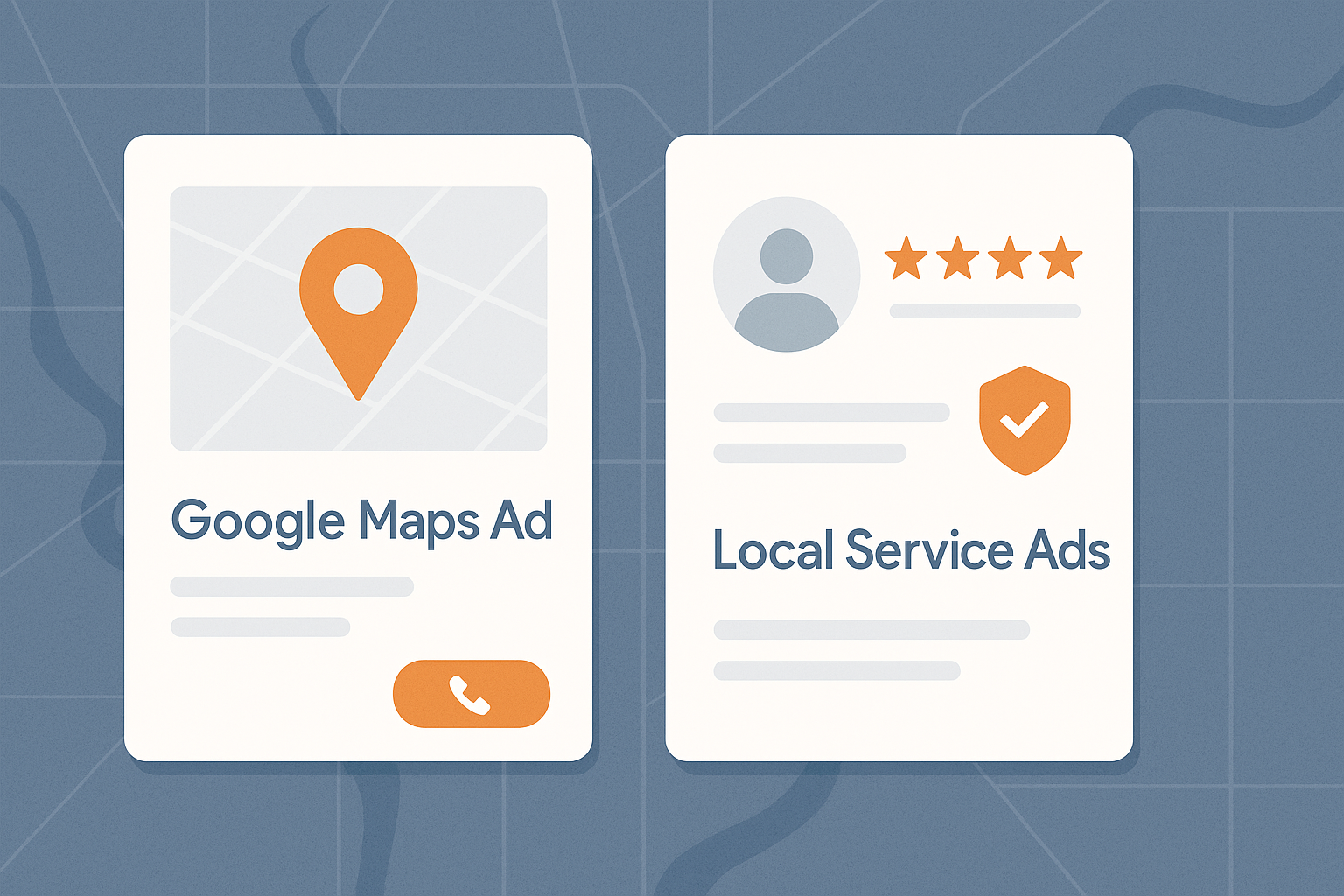Both Google Maps Ads and Local Service Ads (LSAs) can help small businesses get more phone calls, but they work very differently. Maps Ads appear when someone searches nearby and sees your location pinned at the top of Google Maps. Local Service Ads show above all other search results with your business name, star rating, and a “Google Guaranteed” badge.
Both can be powerful if managed well. The key is knowing which one fits your goals, budget, and customer intent.
How Google Maps Ads Work
Google Maps Ads are designed for people searching close to your location. When someone types “roof repair near me” or “Atlanta dentist,” your ad can appear directly on the map with your pin, hours, and call button.
You’re charged when someone clicks your ad, either to visit your site, request directions, or tap “Call.” It’s similar to traditional Google Ads but with higher local intent.
Maps Ads work best for businesses that rely on nearby foot traffic or calls within a small radius. Restaurants, urgent care clinics, and retail showrooms often perform well here because proximity and convenience drive most conversions.
How Local Service Ads Work
Local Service Ads look more like a verified directory listing than a traditional ad. They appear above all other search results and feature your photo, star rating, service area, and hours.
Unlike Maps Ads, LSAs charge per lead, not per click. That means you only pay when someone calls or messages through the ad.
To qualify, you’ll need to complete Google’s screening process, which includes license verification and background checks for certain industries. Once approved, your ad gains the “Google Guaranteed” badge, which adds major credibility.
Local Service Ads perform best for businesses where trust and immediacy matter, like plumbers, electricians, roofers, and locksmiths.
Which One Drives More Calls?
The short answer: it depends on your service type and location density.
- Google Maps Ads tend to generate high call volume for lower-cost, high-traffic services and local destinations.
- Local Service Ads often deliver higher-quality leads for appointment-driven or urgent-response services.
For Atlanta-area home service businesses, LSAs typically produce a higher percentage of real phone calls, while Maps Ads can build ongoing awareness across service areas.
The best results often come from running both together, tracking call volume separately, and letting data show which source delivers the best cost per lead.
How to Measure Results
Use a call tracking platform such as CallRail, CallTrackingMetrics, or Nimbata to monitor calls from each ad type. Combine that with GA4 events to track visits and form submissions. Over a few weeks, you’ll see which ad type brings better conversion quality, not just volume.
During our Free 21-Day Pilot Program, we often compare Maps Ads and LSAs side by side for local businesses. The results show that running both ads strategically, while tracking calls, costs, and conversion intent, builds a stronger overall lead pipeline.
The Bottom Line
Google Maps Ads and Local Service Ads both drive visibility, but the better question is which one aligns with your goals. Maps Ads excel at getting your name seen by nearby customers. LSAs shine at building immediate trust and generating qualified leads.
Our Resound Growth Program helps Atlanta-area businesses test both channels and track what works, beginning with our Free 21-Day Pilot. We monitor call volume, lead quality, and ROI so you can invest with confidence.
Apply for your 21-Day Pilot and see which ad system delivers more qualified local calls for your business.


